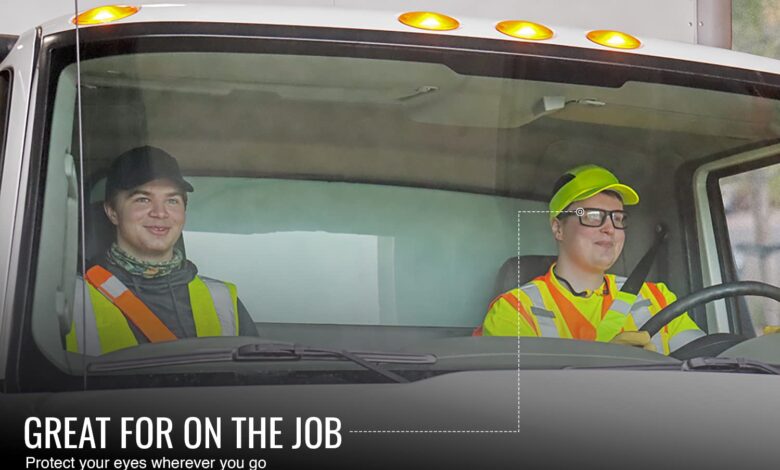
Workplace safety extends as far as eye safety, but it is not often seen this way. Eye injuries are particularly common in industrial settings, where hazards such as flying particles, chemical splashes and exposure to intense light pose a significant risk. Industrial eye safety eyewear programs are there to assist. The programs are designed to get workers the eye protection they need so no one gets hurt and your company has a safe, productive work output.
Among the topics because safety eyewear programs are important, how to implement and differences in eye wear, plus prescription options. We will also look at how these programs can improve workplace safety, compliance and ultimately reduce accidents.
Importance of Industrial Eye Safety
There is no overemphasizing eye protection in the workplace. Thousands of workers are blinded each year from work-related injuries that could have been prevented with the proper selection and use of eye and face protection. Eye injuries can be devastating for the injured worker not only personally but as loss of productivity and increased medical costs to the employer.
Industrial eye safety is made more critical in high-risk environments — like manufacturing, construction, and chemical industries. Sectors where your workers are exposed to a variety of harmful elements, such as flying debris or welding arcs that produce radiation segregation. Perhaps this is the reason OSHA (Occupational Safety and Health Administration) has rules to wear protective eyewear in industries having a risk of eye injury.
Legal and Regulatory Framework
By law, employers must provide suitable eye protection from eye hazards. The OSHA standard regarding eye protection can be found in 1910.133 and its simple dictates are that employers must perform a hazard assessment and provide appropriate protective equipment. Books and Bends — Eye protection must comply with the American National Standards Institute (ANSI), ANSI Z87. All Reframed eyewear meets the ANSI Z87.
Types of Industrial Safety Eyewear
There are different options for safety eyewear available in the market, which cater to the particular needs of an industrial unit. These can be grouped under two broad categories; over the counter safety eyeglasses and prescription Safety Eyeglasses. As standard, non-prescription safety glasses are made for people of average vision and prescription safety glasses come tailored to the eyesight requirements.

Non-prescription safety eyewear.
Optical Non-prescription safety glasses – Generally has a wraparound lens design to limit optical eye exposure when debris strikes from the side. They frequently contain customizable investigations, for babysitter shields and hostile to fog focal points wanted optically clear vision.
Prescription Safety Eyewear
Workplace safety requires workers who need prescription glasses to wear those safety glasses. These are safety glasses made with prescription, industrial standards for the specific worker. It is also a good idea for employers to work through a prescription safety eyewear program to make sure any workers who need custom vision correction are adequately protected.
Prescription Safety Eyewear Program
Industrial prescription safety eyewear program prevent any disadvantage for employees with vision impairments who also rely on corrective lenses for eye protection. These programs typically align with optical labs to provide safety glasses that meet the worker’s prescription while still following required industrial safety standards.
A Prescription Eyewear Program Is Essential for Safety and Performance Employs are able to work effectively when they do not need to wear goggles for safety instead of additional glasses.
Material and Technology in Safety Eyewear
With improvements in material science and lens technology, industrial safety eyewear has come a long way. Polycarbonate lenses, as well as other types of plastic or trivex safety glasses are most commonly used in industrial situations due to their lightweight and shatter-resistant features. Glass lenses are also available, giving the best optical clarity of all, but they are heavier and more breakable.
Furthermore, today safety eyewear also comes with Anti-Reflex, Anti-Fog and either clear if indoor or tinted/mirror reflective sunglasses if you are working outdoors etc this makes them easier to maintain in tough conditions.
FAQs
Why have an eye protection program for your industry?
An industrial eye safety eyewear program can save workers from eventual accidents in the eyes by providing appropriate safety eye protection that meets required security standards.
Importance of Prescription Safety Eyewear
It is crucial that employees who require eyeglasses for viewing health & safety are not placed at a disadvantage with regard to eye protection and so prescription safety glasses make certain workers receive custom fitted options which fulfil industrial requirements.
What kinds of industry needs industrial eye protection?
For instance, manufacturing, construction, chemical processing and healthcare are some of the industries that often require safety eyewear to prevent eye injuries.
Which industrial safety eyewear is right for me?
Make sure to check out eyewear that complies with ANSI Z87. 1 rating, fits snugly and offers the appropriate protection for your environment.
What about industrial safety eyewear, do you need anti-fog lenses?
Yes, in industries with changing temperature they help to avoid fogging your glasses which can make vision difficult and cause accidents.
Are prescription safety glasses fashionable?
Many manufacturers now have trendy and modern frames with prescription safety eyewear that comply with the current protection standards.
Conclusion
To sum up, industrial eye safety eyewear programs are all important in preventing unnecessary injuries to the eyes of workers. Here are ten ways a comprehensive safety program will help employers reduce the number of workplace accidents, establish compliance with OSHA standards and foster a culture of safety. Among other things, these include programs like prescription safety eyewear programs that help to ensure that workers whose correction to their vision is properly addressed in the office or on job sites.
Creating a safer, more efficient work environment starts with buying reliable safety wear gear and teaching all workers how to use it appropriately
ALso Read: What to Expect During Your Initial Consultation for a Tummy Tuck





